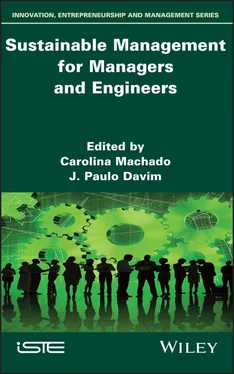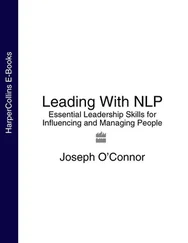The information available currently defines the decision environment. Small changes in the disclosed information may encourage better behavior. This knowledge can be used in several areas to highlight features in order to improve consumer behavior, such as environmentally sensitive production practices, nonanimal testing, or sustainability consciousness.
1.3.2.3. Framing and salience
When deciding on options, the choice architecture frames the features an individual should pay attention to, or make salient, and those an individual should disregard. This is another form of simplification that was identified by Kahneman and Tversky [KAH 79] as the isolation effect. According to this, in order to simplify alternatives, people often ignore the characteristics that the alternatives share and decide by comparing the components that differentiate them. This form of choice can produce inconsistent preferences because a pair of possibilities can be decomposed into common or different characteristics in many ways, and different decompositions may lead to different preferences; therefore, framing is critical in driving preference.
Tversky and Kahneman [TVE 86] present a paradigmatic example of how framing and salience may influence decision-making. In an experiment 3 , patients with lung cancer were presented with two different frames of the same treatment options. In one group, patients received a “survival frame” and were told that through surgical treatment, of 100 people, 90 individuals who had the surgery lived through the post-operative period, 68 were alive at the end of the first year, and 34 were alive at the end of five years; alternatively, through radiation therapy, of 100 people, 77 were alive at the end of one year and 22 were alive at the end of five years. Patients in the second group received the same figures in a “mortality frame” and were told that through surgical treatment, of 100 people, 10 died (instead of saying that 90 were alive) during surgery or within the post-operative period, 32 died by the end of the first year and 66 died by the end of five years; however, through radiation therapy, of 100 people, none died during treatment, 23 died by the end of one year, and 78 died by the end of five years. The seemingly inconsequential difference in the presentation of the procedures produced a marked effect. The preference for radiation therapy was 18% in the survival frame and 44% in the mortality frame. The same effect was also identified with physicians and business students. The terminology is critical: while the survival frame is centered in hope, the mortality frame is centered in fear. People in both cases receive the same information and should logically show the same preferences, despite the wording. This violates the principle of invariance because different representations of the same choice problem produced different preferences and it can easily be used in nudging interventions by simply choosing the wording carefully.
1.3.2.4. Defaults: automatic enrolment and presumed consent policies
People are frequently passive and tend to maintain the status quo, particularly when a decision is difficult and produces permanent or lasting results. The psychological phenomenon known as conservatism or status quo was identified by Edwards [EDW 68]. Conservatism or the status quo is observed in many decision problems in which individuals demonstrate a predisposition to what has already been established. The status quo can result from a decision, delaying a decision, or simply the inability to decide – also referred to as decision paralysis. The theory of choice under conflict by Tversky and Shafir [TVE 92] argues that the decision to postpone action or to take no action becomes more frequent when several attractive options exist. An individual is more likely to delay a decision or search for new alternatives when the conflict between alternatives is high because the alternatives are difficult to contrast (for instance, one alternative may have simultaneously more advantages but also more disadvantages when compared to the alternative options). The more alternatives there are to consider, the more difficult it will be to rank choice preferences, and the longer a decision is delayed, the more likely a person is to continue to hesitate, therefore maintaining the status quo.
Defaults work well for passive individuals who struggle to make a decision. Using defaults as the status quo makes people adhere simply because they do not need to take any action. Automatic enrolment works well for retirement planning, automatic saving planning, immediate bill charging or credit card payment. By the same order of ideas, presumed consent removes the burden of the decision. Organ donation is one example of presumed consent that does not require any action and also yields substantial results.
Despite the benefits of defaults, many people defend the importance of active decision-making because it ensures that they will be responsible for their choices. For instance, the banning of pre-ticked boxes on websites tends to become the rule. In 2009, the European Union Directive on Consumer Rights prohibited pre-ticking for charging extra payments. Additionally, in 2019, the Court of Justice of the European Union determined that active consent is required for a website to store cookies on user devices. A pre-ticked box, that users can actively deselect to opt-out, is not considered a valid form of consent; instead, affirmative (opt-in) consent is required. However, in general, active consent is often obtained in a routine and distracted way by ticking a box on a form. It is a slightly different way to drive the same result, where there is tenuous involvement of the individual. Personal data protection policies require active consent, and although ticking a box on a form is considered active consent, it does not genuinely engage the individual. It assumes awareness but is mainly based on presumed trust and routine clicking (namely, the unread rules of data protection).
1.3.2.5. Reminders and deadlines
Reminders, gentle reminders and deadlines create urgency for action. Digital nudging often uses these strategies and helps people accomplish their tasks and obligations on time.
Government institutions and corporations actively use reminders and deadlines to nudge people. Taxpayers receive recurrent reminders about tax payment deadlines and information on simple steps to complete their taxes, such as pre-completed tax declarations, bank transfer codes and automatic debit (or credit) payments from their bank account. Likewise, Gmail users are nudged in several ways. By default, Gmail accounts have a nudge option activated to remind users to reply to important emails (as classified by the Gmail account) and follow up on emails sent for which no response was received (again, Gmail classifies emails to which a response would be desirable). It uses artificial intelligence to scan and identify which emails should come to the top of the inbox. Being nudged can be helpful but also annoying if it occurs too frequently. If users prefer, they can manage their nudges by turning off the nudge feature and using the snooze feature to create a custom reminder; alternatively, both options can be used. Additional productivity tools offered by Gmail include “Smart Reply” and “Smart Compose”. When reading an email, Gmail suggests an answer that is just one click away (this is not offered with every email as Gmail needs some context to generate a reply). Such features drive people’s actions and sometimes cause users to feel guilty if they do not act in accordance. And, guilt avoidance is a strong incentive for action.
Emphasizing what most people do is a strong cue to make others engage in the same desirable behavior. Highlighting positive behavior, recognizing accepted social norms and cultural dynamics may influence people’s actions accordingly. Educators know that reinforcing good behavior is far more effective than calling attention to and correcting bad behavior. Policymakers use this insight frequently and are often criticized for creating a nanny state. Nevertheless, the results may justify the intervention.
Читать дальше












